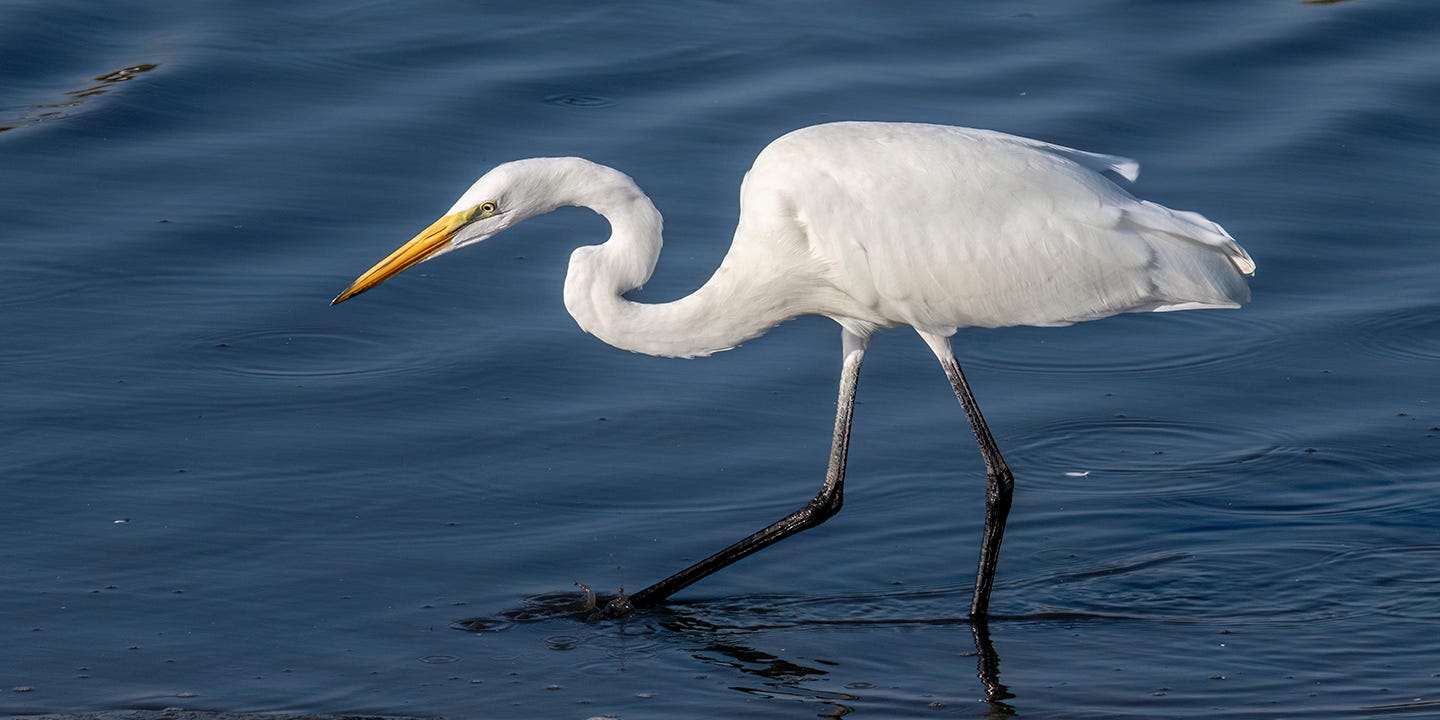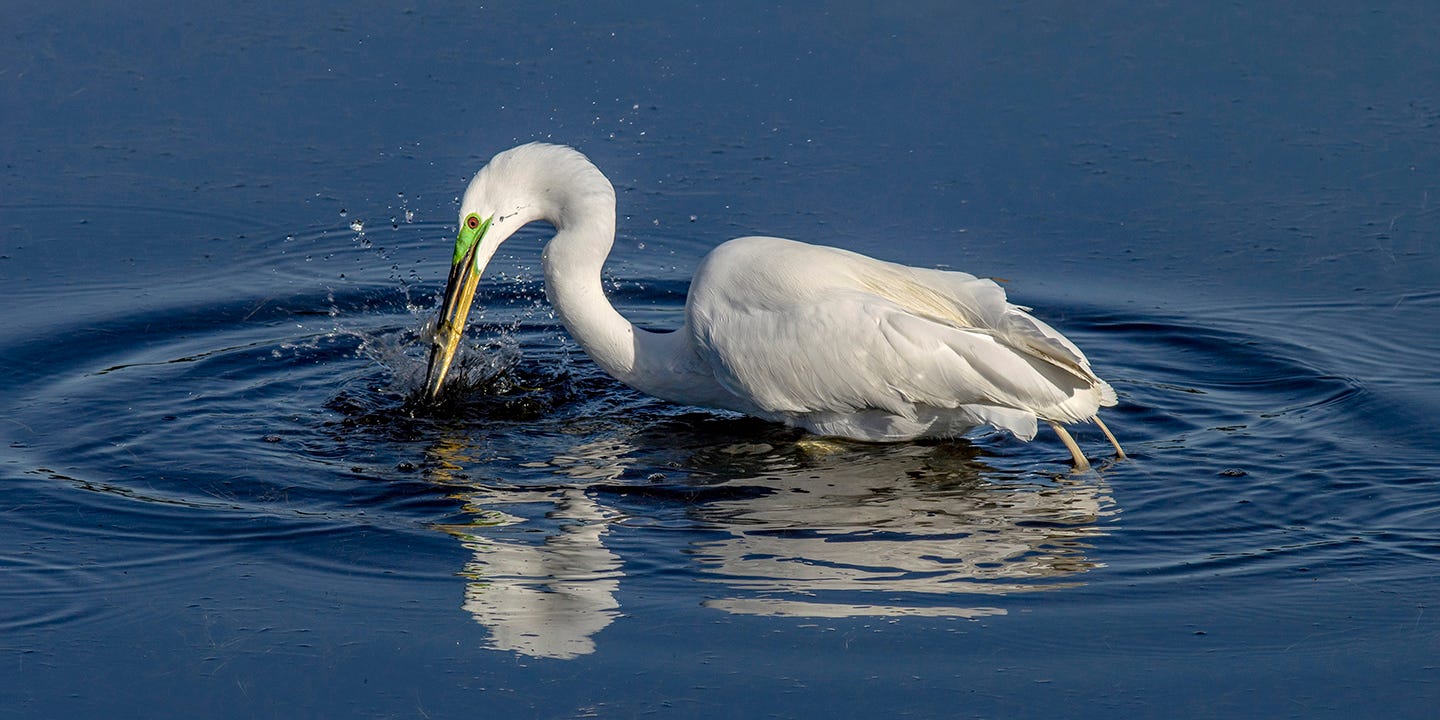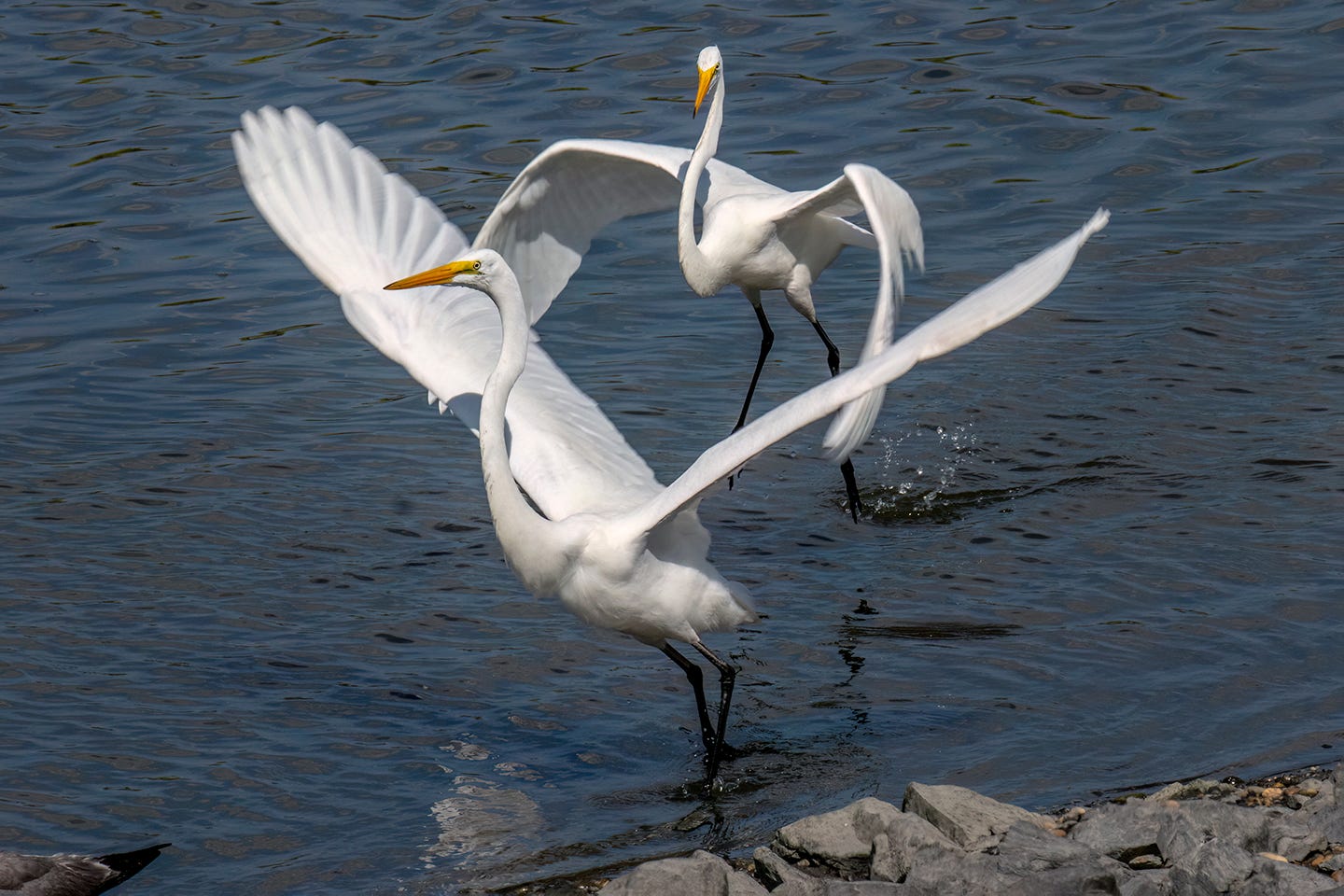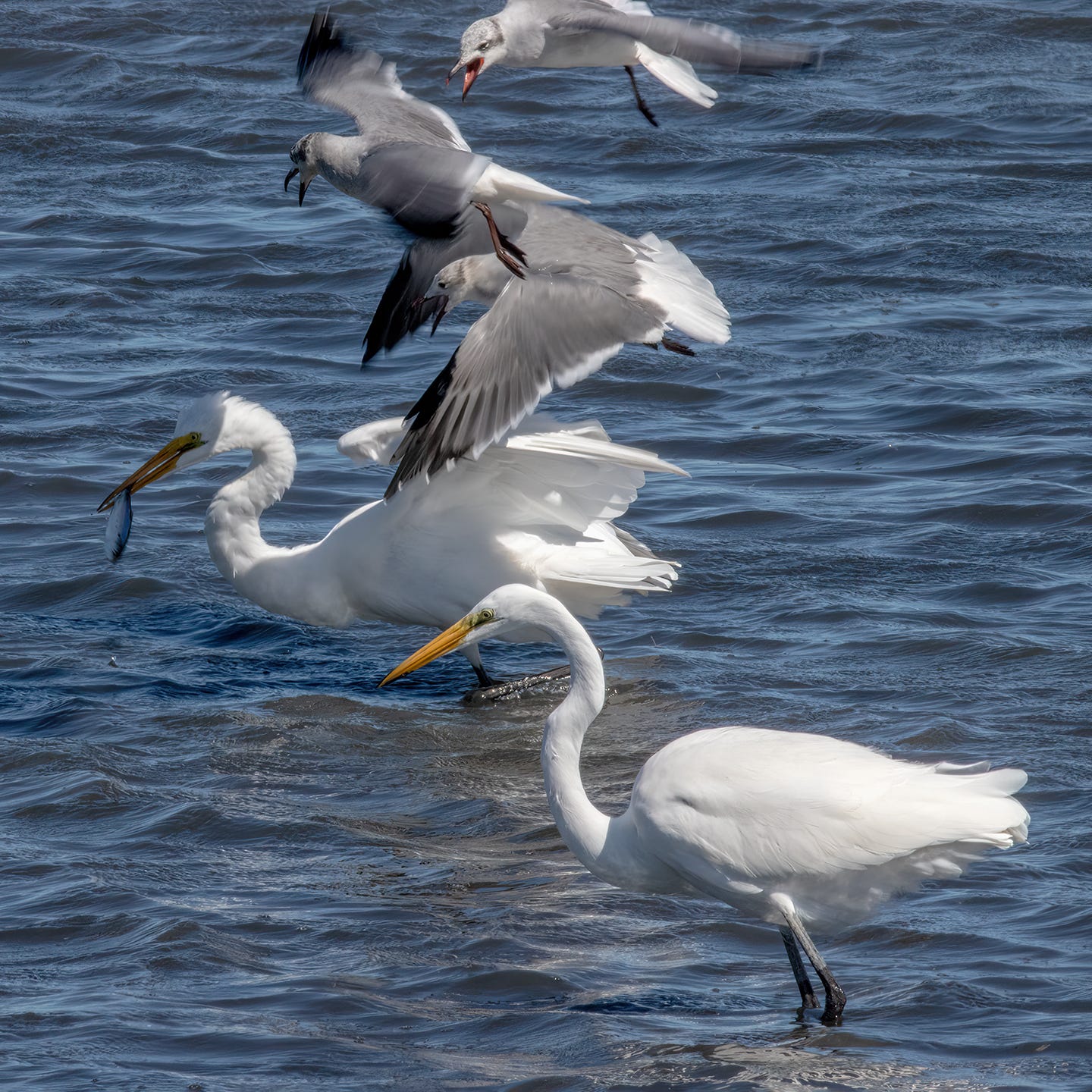The Great Egret is an elegant member of the Heron (Ardeidae) family. Great Egrets, Reddish Egrets, Cattle Egrets, and Snowy Egrets along with Great Blue Herons, Little Blue Herons, Green Herons, Tricolored Herons, Black-crowned Night Herons, and Yellow-crowned Night Herons belong to this family. Then throw in American and Least Bitterns to make it even more confusing. I simply love to watch and photograph any of the wetland and coastal birds and I’m happy to say I have been fortunate enough to photograph the entire Heron family, which you’ll be seeing in future posts.
Standing nearly 3 feet tall, Great Egrets weigh on average only 35.3 ounces. To put that in perspective, a large 1-liter bottle of soda weighs a total of 33.8 ounces! Great Egrets can be found over a large portion of the United States as well as Central and South America.
Great Egrets hunt in both fresh and salt water and if you’ve ever watched them stalk prey, you’ve witnessed a lesson in patience. Great Egrets glide through shallow water on long legs, one slow step at a time. Pausing to read the water, they stretch that long neck out and stand in one spot until an unsuspecting fish, frog, or crab wanders too close. Then they strike like lightning. If you blink, you might miss it!
In tidal wetlands, the spillways that allow water to flow in and out of the dikes are popular spots for wetland birds to congregate. When the tide is low, channels of water narrow, and small fish, amphibians, and crustaceans are confined in a smaller area. Large groups of birds gathering in these areas are not uncommon with many species of birds hunting together.

Squabbles arise often if a Great Egret feels another is too close for comfort. They will stretch up in a threatening pose, give a hoarse croak, then launch themselves toward the other forcing it to back off.
At times, gulls will surround the egrets, dive-bombing them and trying to steal the fish, often with great success.
Informational sources include All About Birds https://www.allaboutbirds.org/guide/Great_Egret/overview; Wikipedia https://en.wikipedia.org/wiki/Great_egret; and The American Bird Conservancy https://abcbirds.org/bird/great-egret/.
The images I post are copyright protected and most are available on my website here so please drop by for a visit. I’ll never hide my posts behind a paywall so to help support my work, please consider subscribing, purchasing a print or notecards or you can send a donation by clicking on this link:
Please feel free to share my Substack and I hope you enjoy the content!











We have a family of this type of heron living on the grounds where I work. I feel blessed to see them many days on my lunch break while sitting outside and watching the pond and wildlife. It is such a beautiful bird… and also very special to me. 🤍
Beautiful photos. Thank you for sharing.
Beautiful photos.